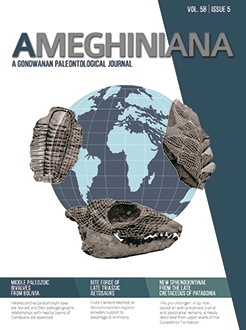Aetosaurs are quadrupedal archosaurs that had a worldwide distribution during the Late Triassic. They had small heads relative to their body size and a long tail, and they are characterized by a dorsal and ventral carapace formed by ornamented and articulated osteoderms. Although aetosaurs historically have been considered the only herbivorous among the early pseudosuchian archosaurs, few analyses quantitatively assess their feeding habits, and some authors have proposed omnivorous and/or scavenging habits for the group. Neoaetosauroides engaeus is an aetosaur from the Late Triassic of the Los Colorados Formation, La Rioja, Argentina. N. engaeus is known from three relatively well-preserved skulls, making it an excellent taxon to study the feeding ecology. We applied the Finite Element Method to estimate bite force and to evaluate the structural response of the skull at different positions during food processing. Our results show that the skull of N. engaeus generated a bite force of 3.6 kN, a magnitude comparable with the measurement made in Alligator mississippiensis, and could resist lateral and longitudinal forces during feeding. This indicates that N. engaeus was capable of hunting of small living prey (e.g., cynodonts) with its jaws, and/or dragging carcasses of larger sizes (e.g., dicynodonts). These results bring new evidence that supports possible zoophagy or omnivory for N. engaeus, thus expanding the potential ecological roles of aetosaurs.
How to translate text using browser tools
30 September 2021
Biomechanical Skull Study of the Aetosaur Neoaetosauroides engaeus Using Finite Element Analysis
Jeremías R. A. Taborda,
Julia B. Desojo,
Eduardo N. Dvorkin
ACCESS THE FULL ARTICLE

Ameghiniana
Vol. 58 • No. 5
September 2021
Vol. 58 • No. 5
September 2021
Biomecánica
Biomechanics
Bite force estimation
Estimación de la fuerza de mordida
Feeding habits
finite element model
Hábitos alimentarios




